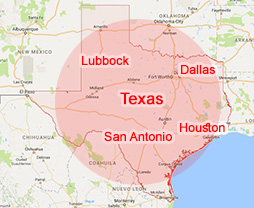Blood Draw Procedures 2nd of 13
No Problems. Everything looks perfect right? Average Blood Draw you would see on any police video. Now what did you see?
Audience: The stuff that it has alcohol in it, she is grabbing this cotton swab and transfers it there which she rubs out at his arm and before that could even dry she also I think swabbed his hand with tiny alcohol pad.
So you are saying that the hand sanitizer and didn’t used gloves and touched the venipuncture area after using the hand sanitizer, just used one swab with—what appeared to be a Isopropyl swab. Anything?
Audience: Yeah and she—if you think of it as like you are trying to prevent germs, if the sanitizer was a germ, she is transferring it to everything she is touching and she is touching him with it and I know that is a minute amount of stuff but when they do a breath test
Sure, it is contamination even with small amounts of alcohol being transferred to the tip of the needle to the stopper in the vials. Anybody else?
She shook one vial too hard and didn’t shake the other one at all.
Yeah she shook one too vigorously which you should not do because that can cause hemolysis which is the breakdown of red blood cells. So that’s why they talk about gentle inversions not vigorous shaking and then the other vial wasn’t touched I mean she touched it but did not inverted at all. There were different color vials which indicate different additives one of them was vial top but it’s probably hard to see that. Anything else?
Tattoo, there is tattoo on his arm.
You’re not supposed to draw from a tattoo side and we’ll talk about that as well. Back there?
So she pulled the needle out without pulling the vacuum steel tube out [inaudible] alter the oxygen blueprint.
Yeah you guys know a lot. I don’t even need to be up here telling you about proper blood draw procedures. That’s right. That’s really important because that happens a lot, probably about 50 percent of the times. Here’s 11 things that I intentionally asked the blood drawers to do wrong. But on that point that’s really good, most of you probably know the mechanism of the blood draw the evacuated tube, the suction in the tube will draw the blood out and if you take the needle out with the vial still attached, its’ going to keep sucking air in from the environment. You want to guard against that because you don’t know what’s there it’s a potential source of contamination but proper blood draw procedure is you remove the vial from the vacutainer you know, stuck in it and then you remove the needle, that way when you remove the vial the seal should close and prevent anything else from going in the vial. You never want the whole needle to come out with the vial still attached.
So she used hand sanitizer which is 70% Ethyl Alcohol, the actual type of alcohol that is being tested for in blood analysis. She didn’t use gloves, I think it’s okay to clean your hands and use gloves I don’t think hand sanitizer should be anywhere around a blood drawing environment. There’s other ways, you can use soap and water to clean your hands. It’s just too much risk of small amounts like we were talking about that substance to come into contact with other equipment is being in the blood draw. She didn’t check the vials for the expiration date or even to see that there was any powder in the vials. Everybody just assumes well it’s a great top tube, I know it’s got Sodium Fluoride and potassium oxalate in it. Why do I need to check it? But you need to check it because sometimes they don’t come from a kit or sometimes humans make mistakes and they might forget to put the additives in there. I know certain Agencies; they don’t even get blood draw kits. I know In Houston for a while they were—all the supplies were just being given to the blood draw room and people individually like individual tubes so there were no kits. But the person drawing the blood needs to check to make sure that the expiration date is good and that there’s actually the additives in the vial. Alcohol swab was improper even though an alcohol swab is Isopropyl alcohol and a gas chromatography can distinguish between Ethyl and isopropyl. It’s still common knowledge that you’re not supposed to use an alcohol swab and it’s just bad practice. Most blood drawers will tell you that you know they’ve been trained not to use an alcohol swab if you’re doing blood draws where they’re going to be testing for alcohol and just one swipe is not sufficient, you have to cleanse the venipuncture area.
There’s different ways to do that you can scrub back and forth but you know a concentric swab starting from the inside and going out is usually the preferred method and then it’s important to let it dry so Betadine has a much longer drawing time than isopropyl Alcohol but when you have a nurse in a hospital environment and the officer comes in with a warrant says “here I need a blood draw” they switch to Betadine, they wouldn’t probably normally use Betadine because alcohol swab is much quicker drying. So when they use Betadine, they’ll just let it dry the same amount of time as they used to letting the alcohol swab dry it’s like 10 seconds.






